Light and Tides

Red-throated Loon / Dyer Point / Cape Elizabeth, Maine / 12Nov2017
SINCE MANY OF US WILL HAVE OUR FILL OF TURKEY this week, I offer you instead a birding adventure along the coast of Maine. And among these glowing birds, I also offer you a reminder about light and tides.
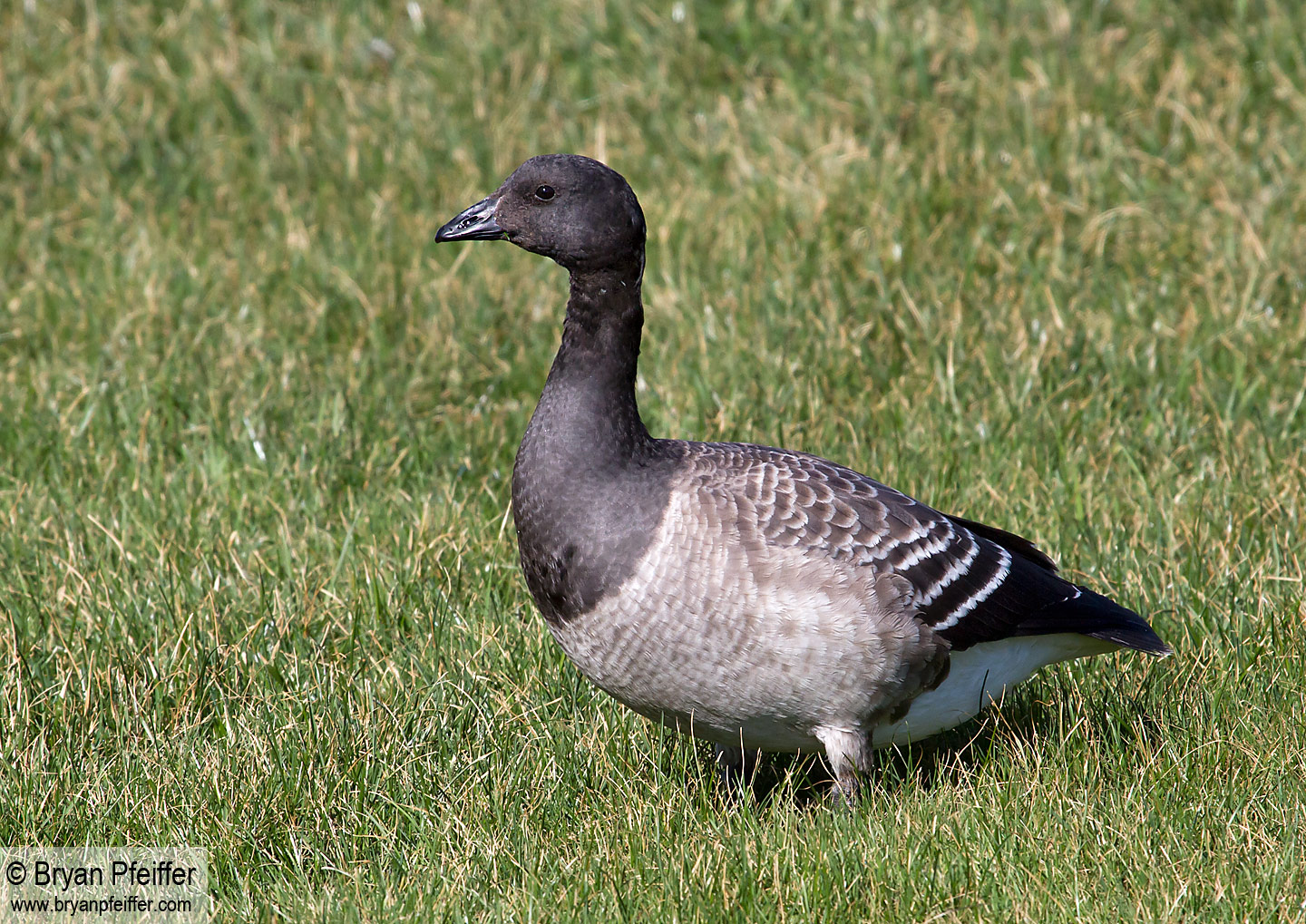
Brant / © Bryan Pfeiffer
First, the light. There isn’t much. My pal Josh and I visited the southern Maine coast on November 11 and 12, each with about 9 hours and 45 minutes of day-length. But what November light lacks in quantity, it delivers in quality. Low, angled sunlight makes feathers glow. Take that immature Red-throated Loon above, which Josh shot with the sun low and at our backs.
You want a proper view of Harlequin Ducks? Sure, they’re bird-candy at almost any hour — “lickable,” as Bridget Butler likes to say. But you haven’t seen the rich blue and red, the comical, pleasing patterns, on Harlequin Ducks unless you’ve seen them frolicking with the low winter sun setting upon their feathers. They will glow. So too will the sharp feather edges on immature Brants, including this one, all the way from the Arctic, visiting the lawn at The Nubble lighthouse in York, Maine.
Next, the tides. When you’re birding the coast, you must know its rhythms. That’s Josh below standing in the Nonesuch River near Scarborough at low tide. Although you can’t see them well in this shot, the tidal flats here were loaded with shorebirds and gulls. (Josh was photographing Bonaparte’s Gulls [my favorite gull], which you’ll see in the image gallery below.) A few hours earlier (or later), there would have been no waders (except for Josh), nor would there have been that Black-bellied Plover (below) at my feet, which I photographed with the point-and-shoot. Rising tides, which push the shorebirds toward you, are often best. Even better are rising tides with low light.
By all means, visit the coast on cloudy days. After all, the rarest of birds often show up in crappy weather with on-shore winds. But whenever you can, when birding, put the light and the tides in your favor.
I’ll leave you below with a few more of Josh’s photos, then an image gallery.
Happy Gluttony, er, I mean Thanksgiving, everyone!
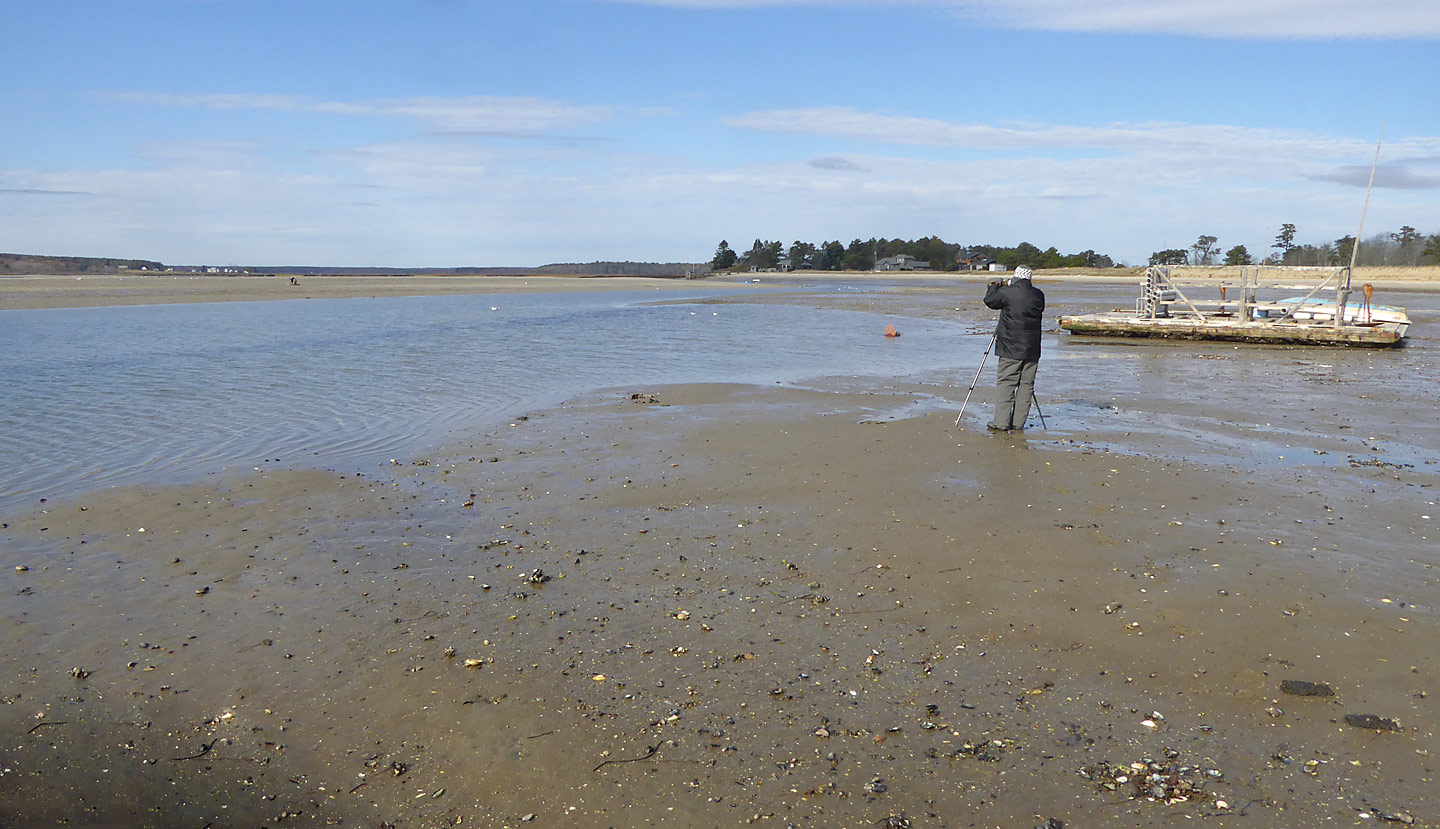

Black-bellied Plover / © Bryan Pfeiffer
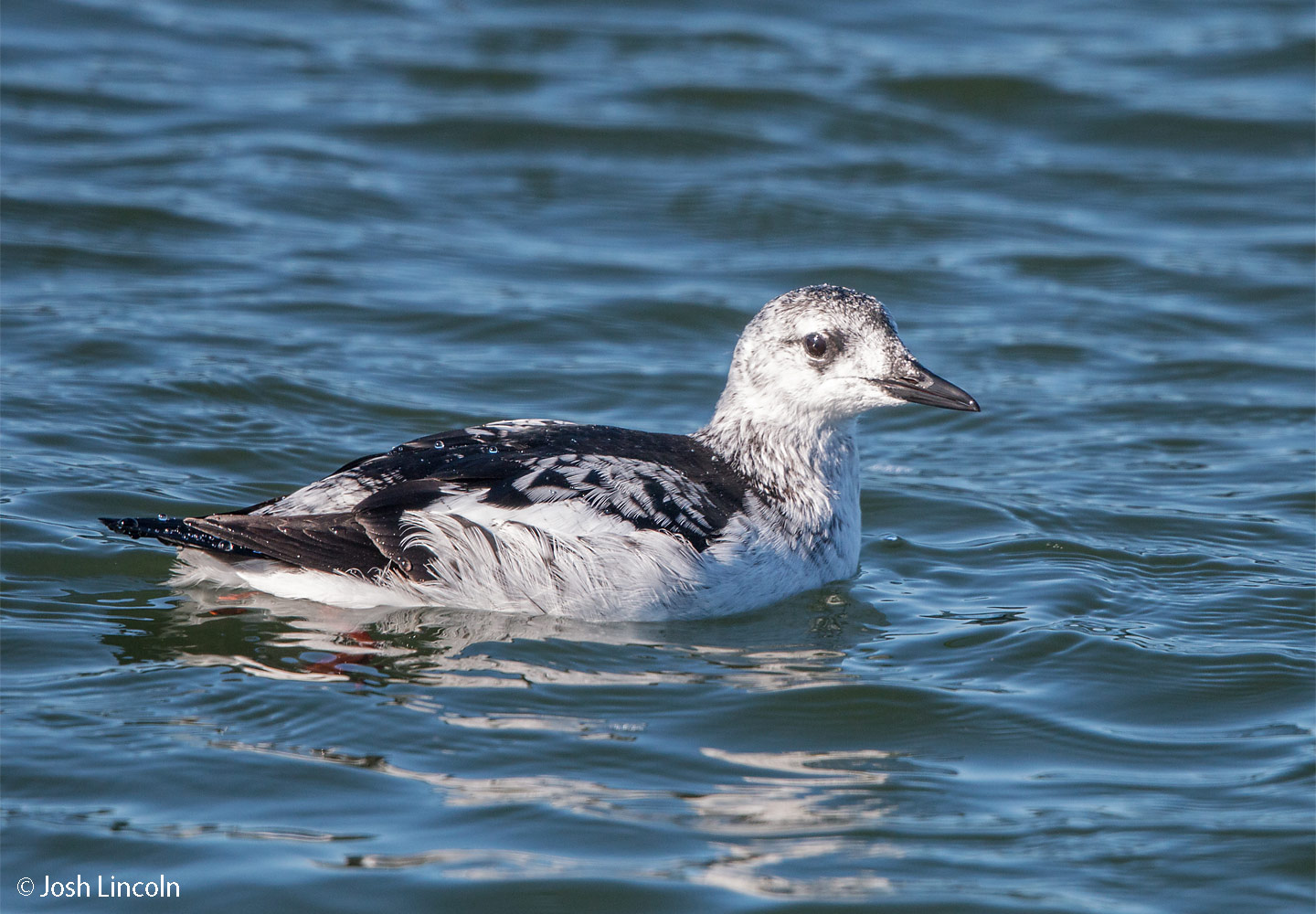
Black Guillemot / © Josh Lincoln
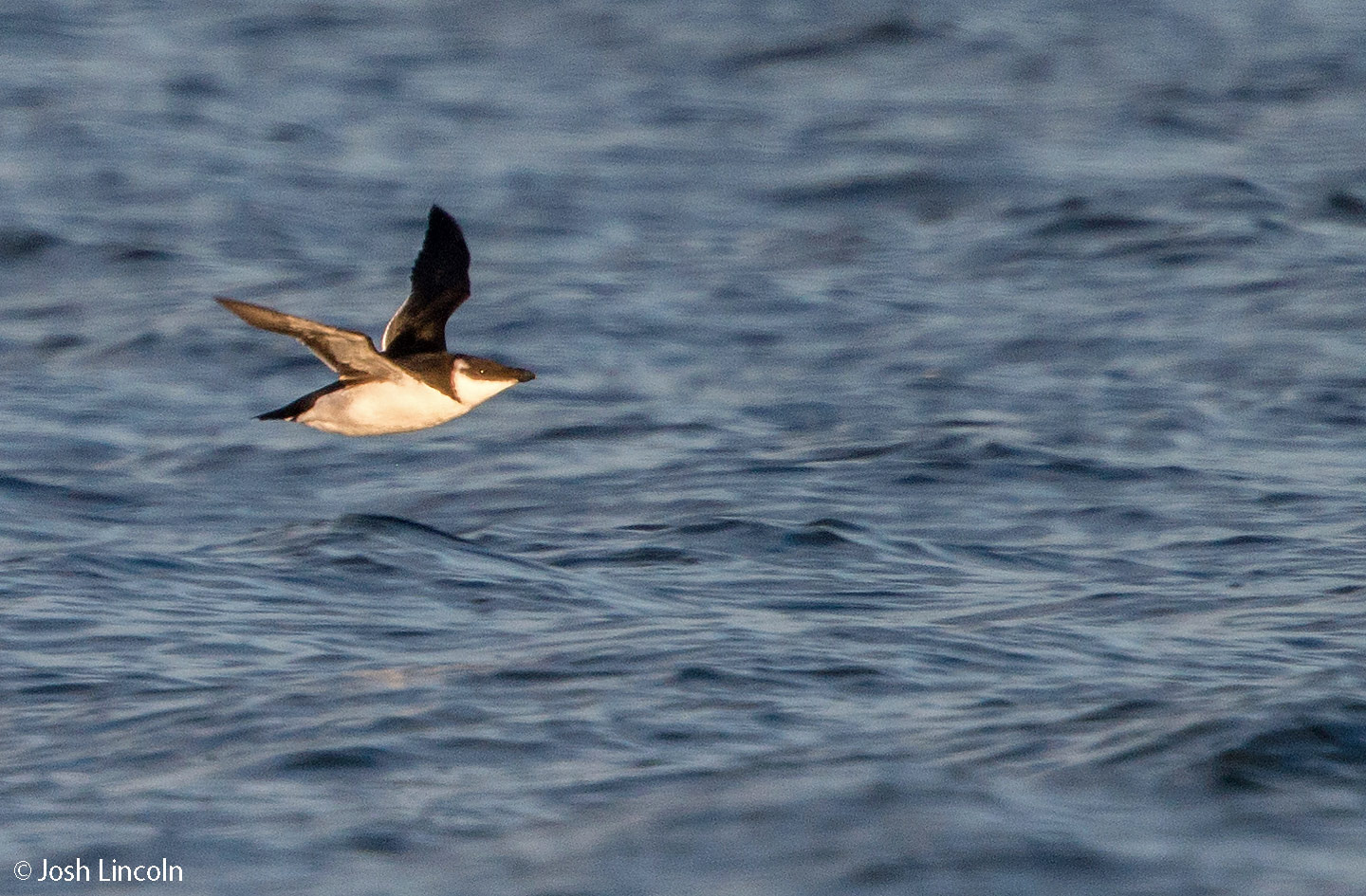
Razorbill (immature) / © Josh Lincoln
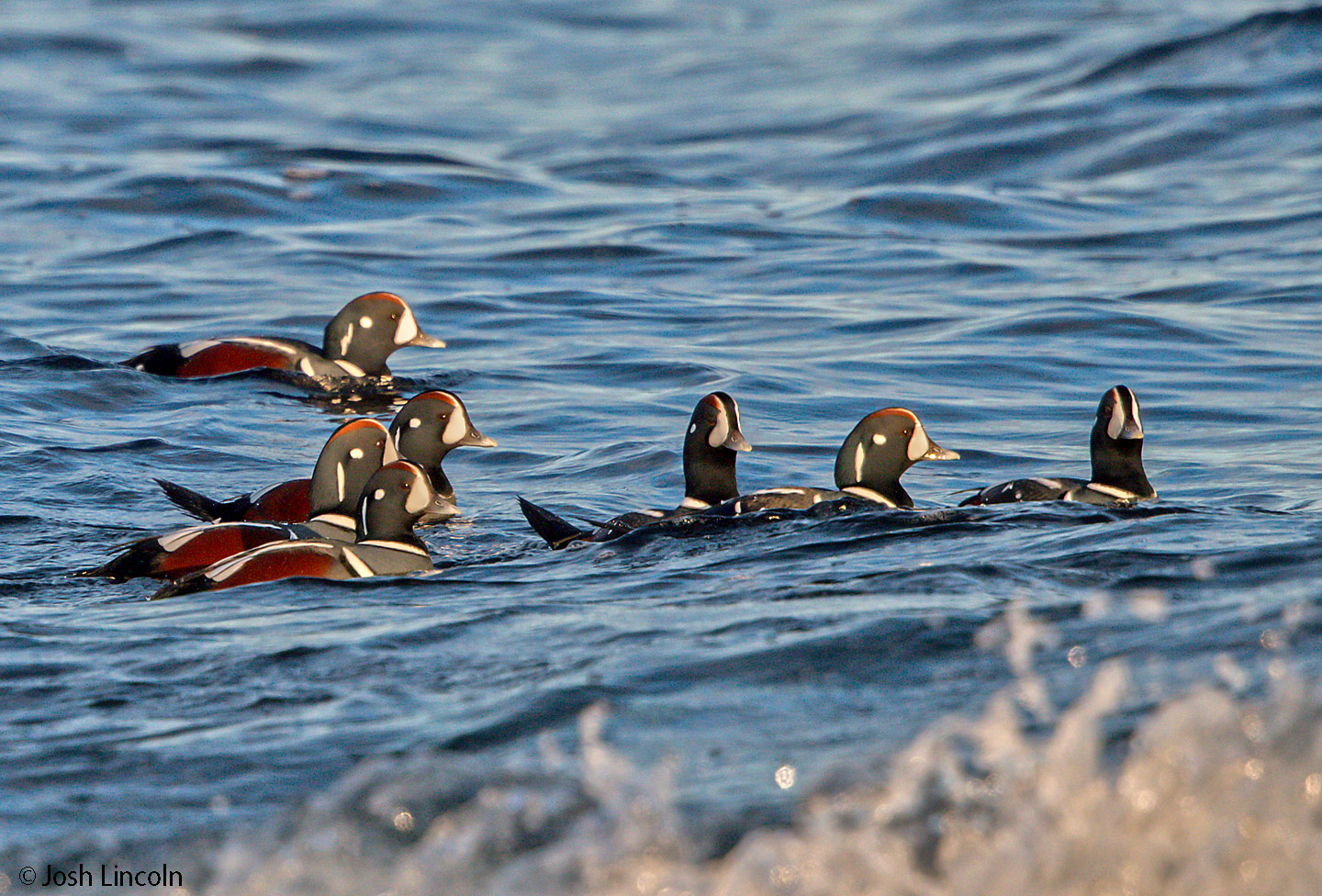
Harlequin Ducks / © Josh Lincoln
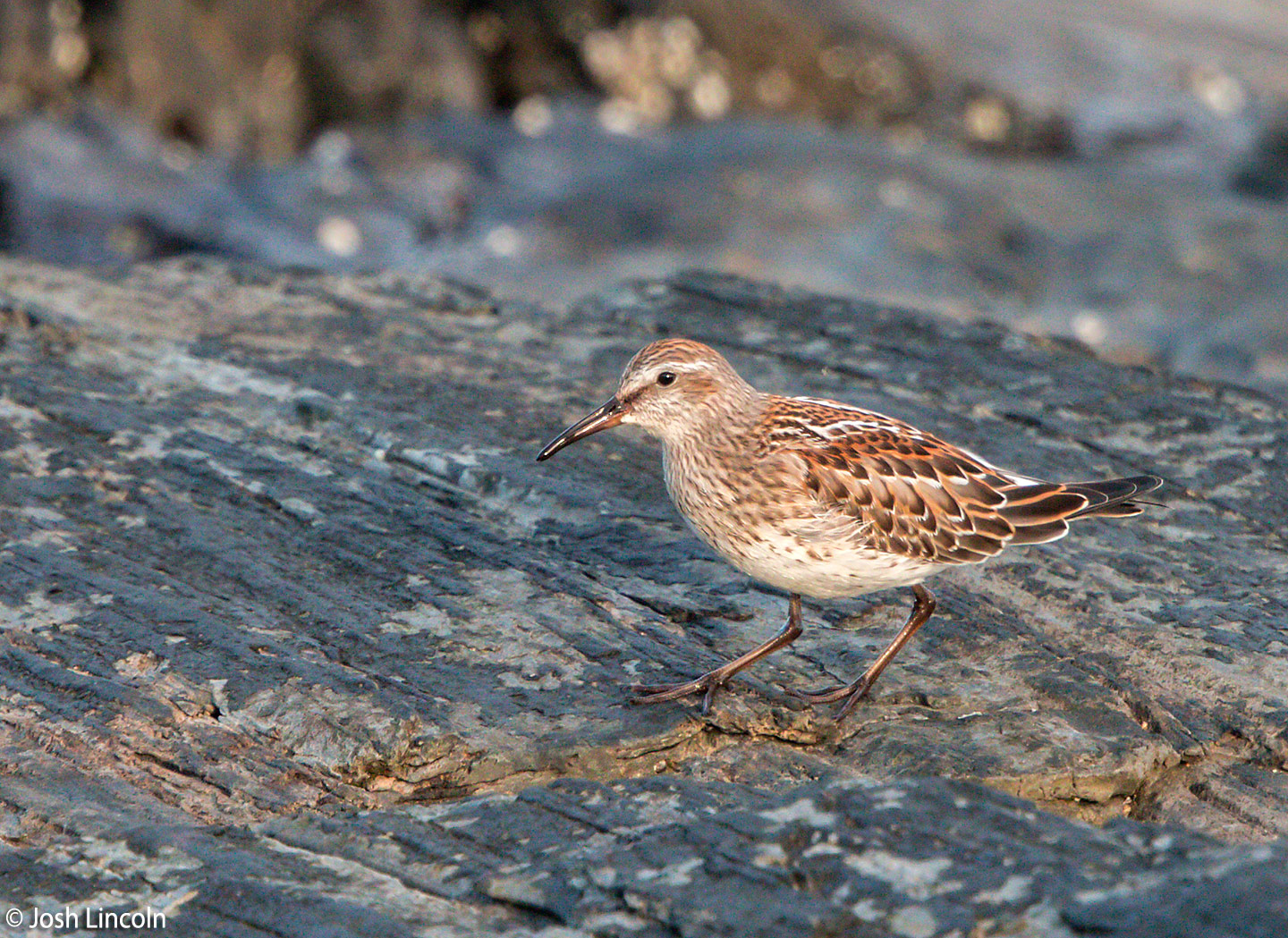
White-rumped Sandpiper (juvenile) / © Josh Lincoln

Thanks, Bob. Yes, indeed, some nice birds out there in RI. Hope you get some Snowys soon! I wonder if the incursion might be tailing off. We’ll know more after Christmas counts.
Thanks, Sandra. Stay warm out there “on the prairie!”
Yeah, crazy rust. Never seen it in a White-rump like that either.
We do also love (eating) turkeys!
Thanks for sharing this Thanksgiving treat. Beautiful photos!
Great shots, wish I were up at Grand Manan now, but probably not till Spring. We’re having our share of good birds here in R.I. , Bald Eagles, Tundra Swan, many Gannets, Greater Shearwater, Harlequins, etc., waiting for a Snowy to show up soon. Thanks again for your posts, look forward to reports from up North,
Bob Weaver
These birds were great…even without a side of stuffing and cranberry sauce. I am thankful for birders/photographers like you who catch and share nature’s beauty. Judy
Wow, I’ve never seen a White-rumped Sandpiper that bright and red before! Beautiful—as are all the other pix. So glad you made it to Maine!
You made my day Bryan with all those wonderful photos of our avian friends.
Thanks for the virtual trip, Bryan! Now I see what I should be doing with my November birthday weekends!
Bryan,
Gorgeous photos! Thanks! I must take a trip there…
Rollin